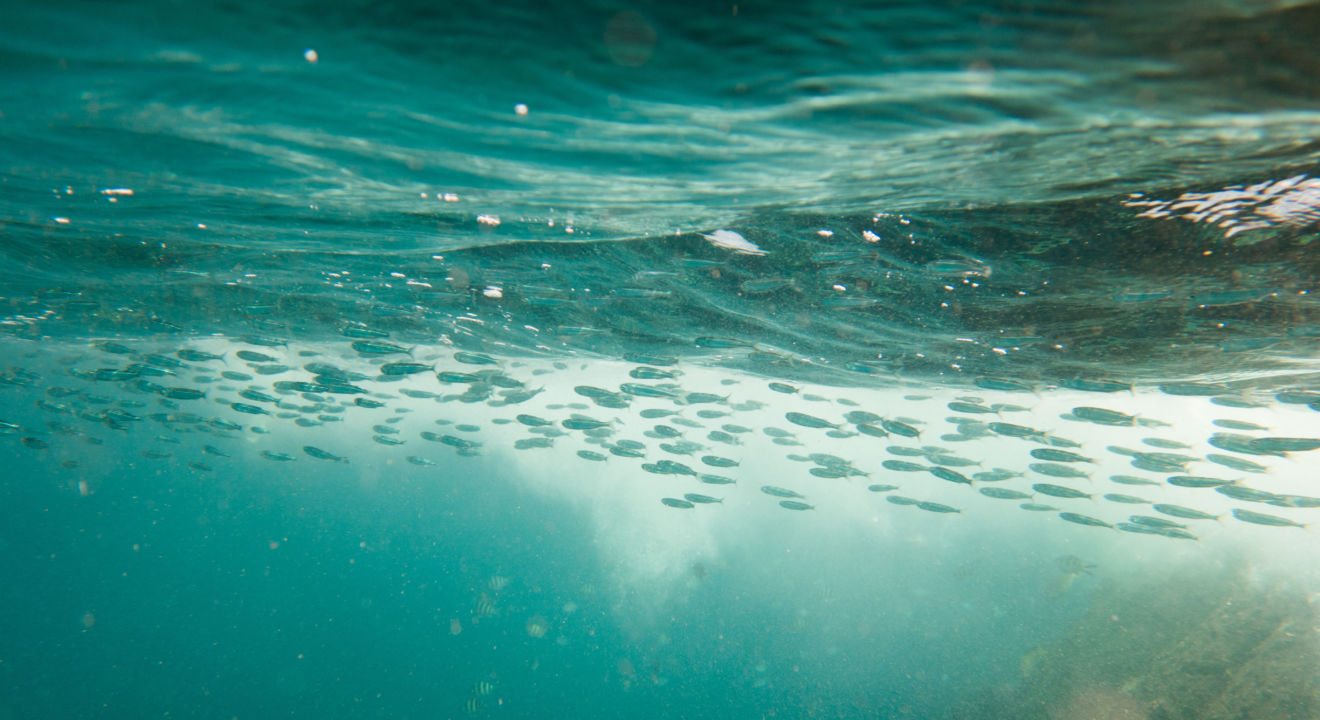Sustainability September 27, 2016


The next time you listen to your favorite “Calming Whale Sounds” CD, you could find yourself with an ear full of mechanized engine humming. The ocean is a busy place: companies are drilling for oil, the military is testing sonar technologies and cruise ships are carrying families to foreign islands for Spring Break. Though you may not hear anything but soothing waves and the occasional marine bird from above the water, it’s a completely different world under the surface.
But did you know that all this sound is making a huge impact on the underwater ecosystem? Could your favorite marine animals be in danger of losing some of their most vital resources?
A combination of acidification, sonar and ocean transport has made the ocean a much, much louder place. Though the ocean is thought to be fairly silent, with panoramic images of it usually accompanied by hushed and cinematic music, it is actually as loud as a bustling city. Sea creatures use sounds to find food, mates and to identify their surroundings.
Where exactly is all this noise coming from? First off, the ocean is getting louder even without accounting for engine sounds, underwater construction and technology-based white noises. Excessive carbon dioxide – due to climate change – is causing the acidification of the oceans. More acidic water absorbs less sound, which means that oceans are becoming generally louder with global warming.
The increasing acidification of the oceans’ waters is the first reason that marine life is at an increasing disadvantage to survive. The next issue arises from technology. According to The Seattle Times, “noise pollution emanating from shipping lanes has increased more than tenfold since the early 1960s.” (Keep in mind this is only one category of noise pollution from technology.)
Sonar is another category of harmful noise pollution. According to Scientific American, “In January 2005, 34 whales of three different species became stranded and died… during a nearby offshore Navy sonar training.” Scientists think that the mammals could have become beached by sonar for a number of reasons. Escaping the noise, whales may have swam into a more shallow area to escape the noise, or left their regular feeding grounds because they thought the sounds indicated a threat.
There have even been some cases in which a whale will swim to deeper areas of the ocean very quickly to escape these sounds. When they do this, they get the human equivalent of “the bends,” or decompression sickness, which is often experienced by divers who move up or down in depth too quickly. According to Scientific American, this can lead to bleeding from the eyes and ears.
Decompression sickness isn’t the only consequence that ocean creatures face from louder oceans. The Seattle Times states that “Beaked whales washed ashore with bleeding around the brain shortly after exposure to mid-frequency sonar. Researchers figured out that stranded bottlenose and rough-toothed dolphins often were nearly deaf. Dall’s porpoises and killer whales were found to alter travel paths during Navy exercises.” The repercussions of sonar usage and louder oceans are extremely apparent. Excessive sound waves in the ocean have detrimental effects on the marine life that call it their home.
In another study, researchers exposed cuttlefish, squid and octopus to sounds similar to those found in shipping lanes. Despite the fact that the sounds were both low-frequency and low-intensity, the effects were obvious. The animals showed lesions on their nerve fibers and damage to their sensory systems.
There is further evidence that ocean mammals are taking note of of the increasing noisiness of the oceans. When there’s too much sound for dolphins and whales to communicate, they “shout.” The louder they have to “shout” to communicate, the more oxygen and energy they must use. Scientific American enumerated that “the spin of a ship’s blades, the hum of an engine, the clanking of construction or the bangs of a seismic explosion” are just some of the sounds marine life experience.
Unfortunately, scientists aren’t knowledgeable enough about the ocean’s many creatures to make a definite consensus on the ill effects of sound pollution. Though researchers have compiled information about how large mammals are affected, the ramifications on smaller marine creatures are still largely a mystery. On top of that, the mechanisms for how many sea creatures hear in the first place is still unknown. There are about 30,000 species of fish in the ocean, all with their own nuanced features. The task of figuring out how they hear depending on their locations, structures and depths is a huge task.
From what is known thus far about underwater noise, we know that increasing sound pollution is detrimental to the environment. When deafened dolphins and injured whales start washing up on shores, it’s time for action. In 2008, the European Union submitted a draft of different methods that could be used to reduce underwater noise pollution. Perhaps it’s time for a second draft?